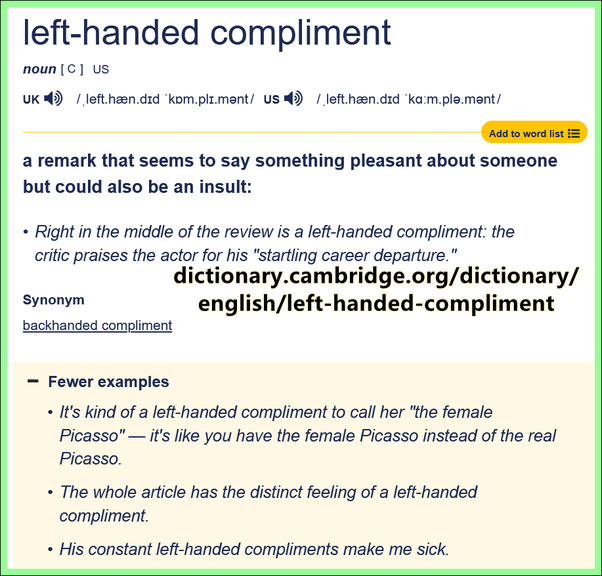To avoid confusing 左/右 as a beginner, I associated the falling fourth tone of 右 yòu / yow and the very last falling stroke of 口 with the meaning “right”: definite, correct and straight to the point.
The constantly changing stroke direction of 左 zuǒ / tzuoo is more convoluted (similar to navigating a maze: right, left downward slash, right, down, right); the dipping third tone reinforces the idea of indirectness, associated with being shifty and unreliable.
Besides, in Western languages, the idea of “left” has negative associations. “Left” in Latin is sinister (left → devious, malicious etc).

[A left-handed compliment]
Ever since creating my private mnemonic, I have never confused 左/右. Don’t be afraid to construct your own memory tricks. BTW, creating private associations of Chinese characters with taboo / obscene words is a powerful way to create strong memories (Heh, heh, heh! No need to reveal your secret 😉